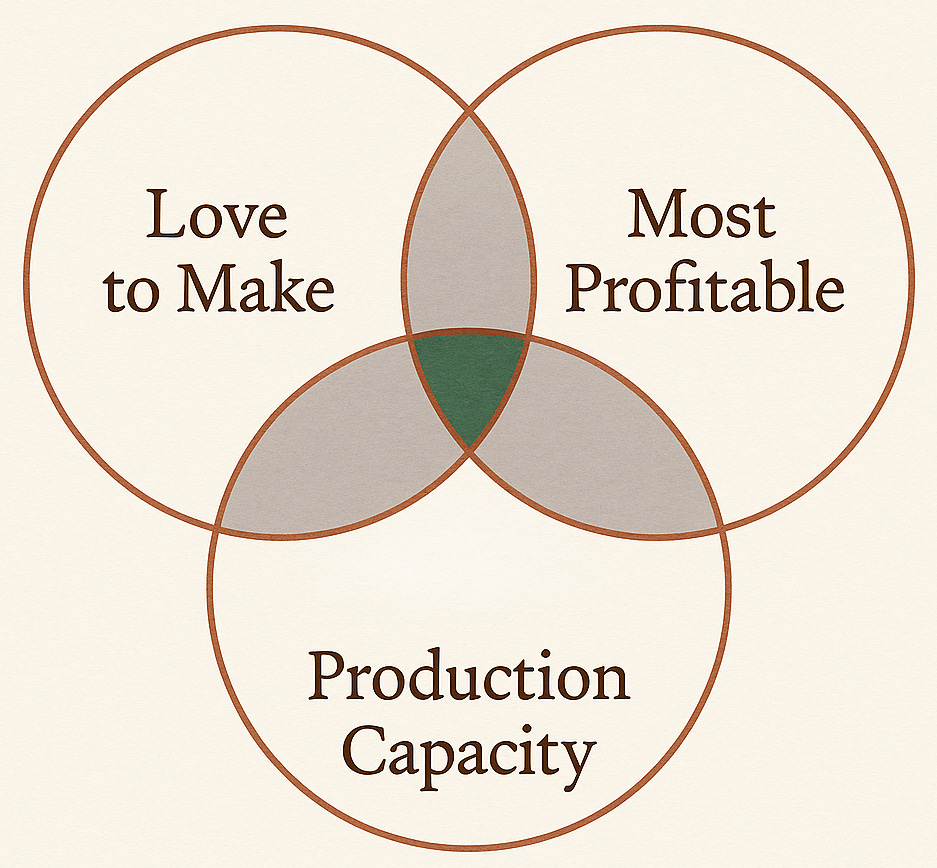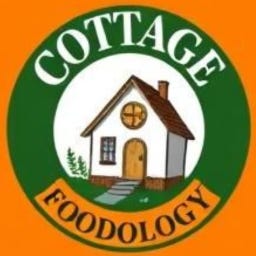BUILDING INCREMENTAL PROFIT MARGINS IN A FOOD BUSINESS!
Discover and Apply the "HEDGEHOG" Concept for Love and Money!
Two of the best business management books of all time were the classics “Built to Last” and “Good to Great”, authored by business consultant and researcher Jim Collins.
In Good to Great, Collins presented the “Hedgehog Concept” as a critical business development tool.
While this applies more to larger companies, we are going to use a similar but simpler version of the HedgeHog model in this article, for the small food industry. And we will apply it to maximizing profits while still making the goodies we love to make.
Note that Collins wrote Good To Great AFTER he wrote Built To Last (BTL).
After he researched and published BTL, many companies said basically, “OK, I screwed up…I did not build this company correctly. Now, how do I move my enterprise to that same superior level?”
So Good To Great happened. Another best-seller. (There is a lesson there in listening to customers.)
So this article is really about massive incremental improvement in your existing (and possibly flawed) enterprise, not just how to build your startup…although it works for both.
Collins broke down this particular corporate business success model (there were several others) this way:
The Hedgehog Concept
Core Idea: Simplicity within three intersecting circles:
What you are deeply passionate about.
What you can be the best in the world at.
What drives your economic engine (profit per x).
Mission: Focus on the intersection to build long-term greatness.
Lofty goals, eh?
Let’s modify these to apply to your role in a Cottage Foods or other foodie lifestyle business.
For example, in one of the circles, you might choose, “What I love to make the most”, or “What specialty/ethnic item can I make that no one around me knows how”, or “What common food product can I make better than almost anyone else.”
I am so happy that most of your do that already!!! And some of you will bake anything just to be in the industry. It’s all good!
Now, pick three mantras that turn your crank most intensely. Find concepts that are easiest to just emotionally wallow in, and that put a smile on your face just THINKING about. The more you connect with your ultimate product line(s), the easier it becomes to log those kitchen hours.
PS What you love to make might be goodies that are “least work”, “most artistic”, or “best flavors” or something else entirely. You already know. Don’t talk yourself out of it, or let someone else do it to you.
Using this model also provides guidance into, or even drives, the ultimate lines of goodies (e.g. cookies, cupcakes, cinnamon rolls, jams, sauces) you choose to become known for.. if that is your business model.
Note that your opportunity is constrained a lot by your kitchen (facility), equipment, budget, and if applicable, cottage food laws, regulations, and/or inspector largesse. But the three-tiered concept still works.
Anyway, write out your version of three Core Ideas on scratch paper, nothing fancy. Then turn them into intersecting circles.
Something like this:
At this stage, assuming this is close to your model, you know what you love to make. Write them in. And, you know what you can make efficiently due to your kitchen, equipment, time, and utensils. Maybe the cost or availability of some ingredients is also a constraint. Write in what your CAN make successfully. In reasonable volume.
Now, see the shaded area where those two overlap? We’ve narrowed down what we love (assuming “realistic” is important) with a list of what we can reasonably make. At least for now.
Note that as you compare what you love to make with your facility capacity, it helps you see how to scale up for what you enjoy. (E.g. buy more muffin tins or a freeze-dryer.)
If you’ve been in the business a while, you’ve probably already done that multiple times.
Once our LOVE LIST is pared down to what we can make logistically, how can we incrementally upscale our profit margins?Fortunately, there is a shortcut to profits. Or at least a place to focus.
With regard to the “most profitable” (or economic engine) circle, if we are using a costing app or formula, we are running prices for all goodies along the same ratio.
For example, one rule of thumb is 4x ingredients or 3x ingredients plus packaging/labeling. The extra return above costs, goes toward overhead and profit.
FINDING THE SWEET SPOT…
However, TIME SPENT per individual goodie varies by product type and quantity. As a result, things may not be in line with what we charge. TIME is where most of the variation occurs, that leads to profits.
There is a time-quantity sweet spot for any line. Number of cookies too low, your time per cookie is obnoxious. Numbers too high, and with the multiple batches, equipment limits, cooling space constraints, increased “accidents”, your labor costs per goodie start back UP.
Do you know where that yummy time-quantity level is for you?
Of course, different CATEGORIES of goodies exhibit different quantity sweet spots. Now you can start comparing.
Analysis: does the time spent per goodie on one category, match the value/return of time spent on another category?
When I was in college (forestry major), I took some ag courses. I once heard the story of someone from Extension Service helping a farmer put together an enterprise analysis for various operations on his diversified farm.
Turns out his hog operation was making only a few cents an hour. “But I LOVE raising hogs,” he said. As cottage or other foodie enterprises are we trotting along with similar “pork” categories?What is your time worth? And do we really keep good track of ALL our time for a particular goodie? Do we include time spent marketing? Setting up and selling at shows? Customer conversations? Delivering? Washing up (do some lines make a bigger mess)?
In another career, I worked with a woodworker who was all about his “shop time”. His prideful mantra was to crank out $xx per hour of products. (When and only when, he was in his shop.) He and his wife spent two full days almost every week doing marginally successful shows, markets, and popups. Some at a fair distance.
He couldn’t figure out what he wasn’t making any money, since he was making a whopping $$ per hour? (But of course he wasn’t.)
As foodie small businesses, we are seriously time-constrained, perhaps our most significant limitation. So final net profit margins (and total profits) are PRIMARILY subject to how we manage and apply our time.
Also subject of course, to the limitations of our facility and tools.
Where to Focus Your Money Analytics:
Part of foodie financial analyses should be finding your time-quantity sweet spots for individual lines/products. We can then choose our lines, decide target markets, and which events to join, for profits.
The goal is to find target markets where we can produce singles or multiples of our time-quantity sweet spots. Less time per googie, is more goodies, all at maximum margins.
But, because what we do is a labor of love (after all) we can still “raise hogs”, and worry about our kitchen time instead of our selling time.
To a point. Sigh.
FWIW.
Mal Dell
The MONETIZATION CHEF
Helping Foodies Cook Up Profits!
Helpful Resources for Food Business Startups:
Food Handlers Training (Food Safe Pal):
Save $3 OFF the normal $15 fee by using the code: ‘MCHEF12’ at checkout. A fun, doodling technology approved in every state that requires a Food Handlers certificate. 100% online, and print off your certificate (and cards) after you pass the test with an 80%+. Recommended for cottage foodies operating in states that require an ANSI-certified Food Handlers course. And highly recommended in states that do not require any Food Safety training.
Recommended Insurance Options For Cottage and Other Small Food Businesses:
FLIP (Food Liability Insurance Program) - Specializing in insurance for FOOD BUSINESSES ONLY! The top business insurance choice for members of the Cottage Food Business community on Facebook. They know the food industry!
or
NEXT INSURANCE - The top online-only insurance company for almost any kind of small business. With their wide range of business experience, they know all the nuances of how to cover you. Very popular with our CFB community.
DEVELOP BUSINESS CREDIT RELATED TO YOUR EIN!!
THE best starter credit card for any small business is the CapitalOne Spark Card!
PS If you don’t yet enjoy a business credit score, you do need reasonable personal credit. If not, you might wait until you can say you’ve been in business for two years (the minimum threshold for many business cards.)
Perks: Get 1.5% cash back on EVERY purchase, or choose the 1.5% air mileage option, if you travel.
No annual fee. Plus, if you spend $4500 in the first three months, you get $500 rebate on your card. Stock up on packaging, labels, equipment and inventory for a whopping 11% discount out of the box at startup, or beginning of Farmers Market season.
CLICK HERE to see if you quality!
This card is easier to get than just about any other business credit card. As your business grows, you will get more card offers in the mail, allowing you to leverage and piggy back.
(PS Remember that only business interest is deductible on your Schedule C at income tax time!)






